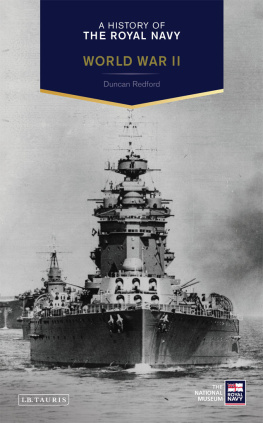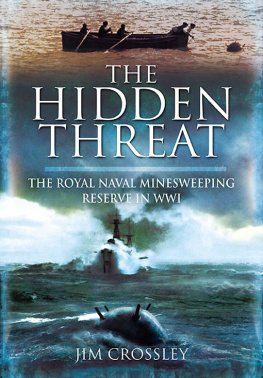Dedicated to those who gave their lives rescuing others.
THE ROYAL NAVY AT DUNKIRK
Commanding Officers Reports of British Warships In Action During
Operation Dynamo
This edition published in 2017 by Frontline Books,
an imprint of Pen & Sword Books Ltd,
47 Church Street, Barnsley, S. Yorkshire, S70 2AS,
The individual reports and accounts are sourced from files ADM 199/792, ADM 199/786, ADM 199/787, ADM 199/788A, ADM 199/788B and ADM 199/789 at The National Archives, Kew and licensed under the Open Government Licence v3.0.
Introduction, text alterations and additions Martin Mace.
The right of Martin Mace to be identified as the author of the introduction, text alterations and additions has been asserted by him in accordance with the Copyright, Designs and Patents Act 1988.
ISBN: 978-1-47388-672-8
eISBN: 978-1-47388-674-2
Mobi ISBN: 978-1-47388-673-5
All rights reserved. No part of this publication may be reproduced, stored in or introduced into a retrieval system, or transmitted, in any form, or by any means (electronic, mechanical, photocopying, recording or otherwise) without the prior written permission of the publisher. Any person who does any unauthorized act in relation to this publication may be liable to criminal prosecution and civil claims for damages.
CIP data records for this title are available from the British Library
For more information on our books, please visit
www.frontline-books.com
email
or write to us at the above address.
Introduction
Winston Churchill famously called the evacuation of the British Expeditionary Force from France in the spring of 1940 a miracle of deliverance. While it may have appeared to the world that the rescue of a third of a million men could only have been achieved by divine intervention, the reality is that it was the less miraculous but equally remarkable courage and professionalism of the armed forces and, most especially, that of the Royal Navy, that saved the United Kingdom from a disaster of unparalleled proportions.
The first hint of the possibility of an evacuation had come as early as 19 May 1940, little more than a week after Hitler had launched his attack upon France and the Low Countries. The speed and destructive effectiveness of the German attack through the Ardennes, which had broken through the weak defences on the Meuse and had penetrated deep into the heart of northern France, threatened to cut the British Expeditionary Force (BEF) off from the coast. With French resistance crumbling under the weight of the German onslaught, there seemed little hope of being able to hold back the enemy long enough for the Royal Navy to assemble sufficient shipping to transport the entire BEF back across the English Channel. Yet that is exactly what happened.
By its nature, the actions to evacuate the BEF, code-named Operation Dynamo , precluded the use of any of the Royal Navys larger warships. It was an operation in which smaller vessels sailed in narrow seas and shallow shores.
As it would be from the port of Dunkirk that many of the soldiers would be embarked, the most obvious sources of transportation were the ferry and passenger ships that in peacetime had plied their trade on the waters of the Channel. Of these there were paddle steamers such as Royal Daffodil , Glen Avon , Duchess of Fife , and the General Steam Navigation Companys Crested Eagle , the wreck of which can still be seen off the beach to the east of Dunkirk and the faster passenger liners. The latter included those of the Isle of Man Steam Packet Company, from which ten vessels had been requisitioned by the Admiralty at the start of the war eight of these took part in Dynamo , with three being sunk in and off Dunkirk.
Fortune had also favoured the Admiralty in that large numbers of self-propelled, flat-bottomed, Dutch barges, known as schuits (or skoots to the monolingual British) had sailed across to Britain from Holland when the Germans invaded just days before. These were ideally suited for the task of manoeuvring close inshore, and some thirty-nine of these vessels were employed on Operation Dynamo , crewed by Royal Navy personnel.
It was Royal Navy personnel who also manned many of the renowned Little Ships, the private pleasure boats and yachts assembled from boatyards and berths along the south and east coasts. Whilst it is true that some owners not only willingly handed over their boats but also insisted in sailing them across the Channel, the majority of these boats were taken by the Admiralty, with or without the owners consent, and, in some instances, even without their knowledge.
It was, though, the Royal Navys own warships which would play the most important role in the drama of Dunkirk. The Royal Navy possessed numerous flotillas of destroyers, but these workhorses of the fleet were already engaged in convoy duty in the Atlantic where the U-boats were striking at the vital supply routes from North America, in battles with the Kriegsmarine in and off the coast of Norway, protecting the coastal routes of the North Sea, and facing the powerful Regia Marine (the Italian Navy) in the Mediterranean. Yet the Admiralty managed to assemble forty destroyers for Dynamo and it was these that not only transported more troops back to the UK than the other vessels, but their guns also helped to defend the other craft that were exposed to the persistent attacks of the Luftwaffe.
As the evacuation gathered momentum, tens of thousands of exhausted and disorganised British and Allied troops shuffled into the evacuation areas along the beaches which stretched out eastwards from Dunkirk harbour, exposed throughout to frequent aerial attack. In many instances, the men had become separated from their officers and their parent units; they were tired, hungry and leaderless. It was into this chaotic scene that Captain William Tennant stepped from the destroyer HMS Keith on Day 2 of Operation Dynamo , his task being to take over duties as Senior Naval Officer, Dunkirk. Other Royal Navy officers took up positions along the beaches, and Rear Admiral Wake-Walker sailed from Dover to organise the flow of ships into and out of Dunkirk and from the beaches.













